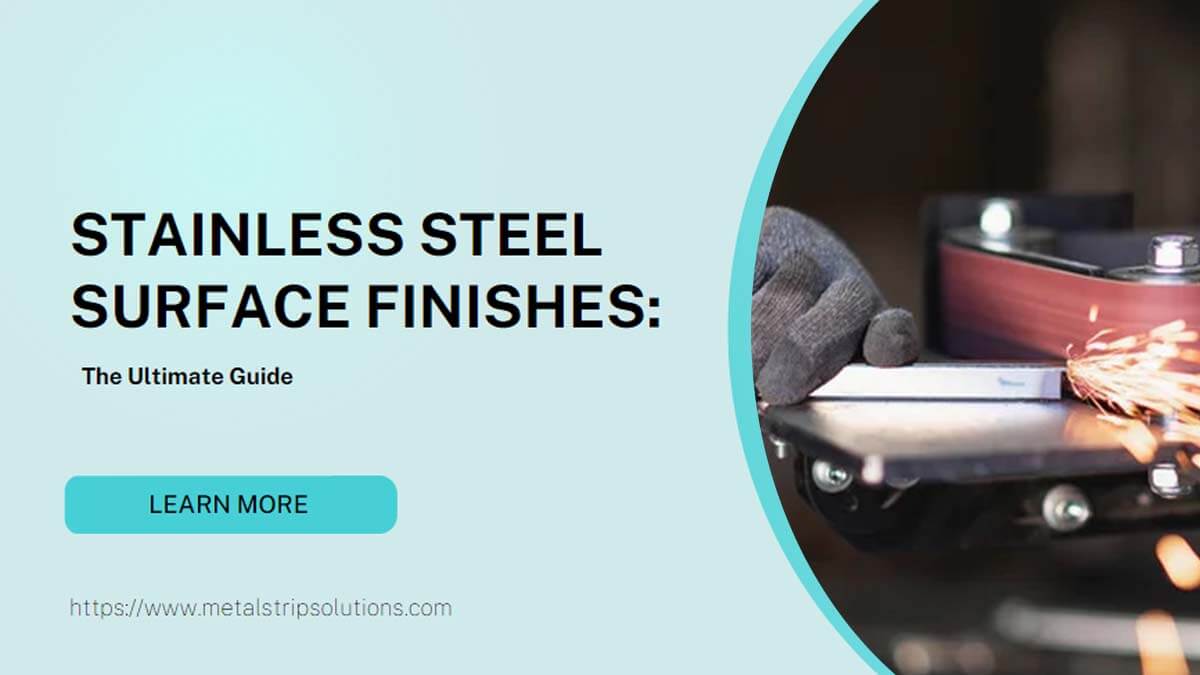The impact of stainless steel’s surface finish goes beyond its appearance itself.
Irrespective of how stainless steel is employed or the ultimate purpose it serves, meticulous selection of its surface finish is vital to effectively fulfill the given requirements. This is due to the fact that, in addition to achieving the desired visual allure, the chosen finish influences resistance against corrosion, characteristics like electrical properties, weldability, manufacturing procedures, and contributes to various economic considerations.
Certain specialized applications, such as components for superconductors or pliable metal hoses, necessitate a specific surface finish for the stainless steel strips to ensure optimal performance of the final product.
Moreover, it’s worth acknowledging that not all suppliers employ identical terminology when referring to the same surface finish. Continue reading to comprehend the subtle distinctions between each finish, thereby gaining a clearer insight into potential discrepancies among suppliers.
If you want to learn more about the stainless steel surface finishes, this article is very helpful for you.
Let’s keep reading.
What Is The Stainless Steel Surface Finish?
Stainless steel possesses unique qualities such as high strength, excellent wear resistance, superior corrosion resistance, and resistance to rust.
As a result, it is widely used in industries, food machinery, electromechanical industries, household appliance sectors, and home decoration, as well as the precision and decorative sectors.
The future development prospects of stainless steel applications will become increasingly extensive. However, the development of stainless steel applications is largely determined by the advancement of its surface treatment technology.
Different Types of Stainless Steel Surface Finishes
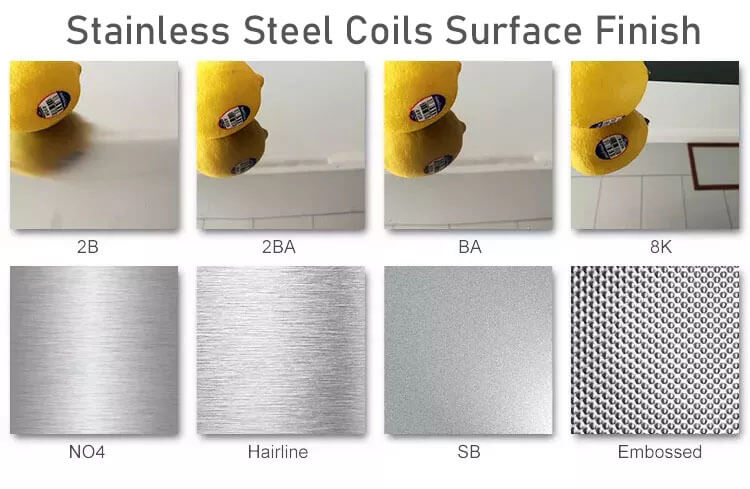
Stainless steel surface finish treatment is one of the major part during production.
HZW’s surface finish designations are based on ASTM A240 standard. Below is an overview of the types of surface finishes available on our stainless steel coils products.
Mill Finish
Mill surface are often the finishes in which steel is produced. They may be used as-is or refined further through additional steps depending on the desired appearance.
With a mill finish, you can achieve matte surface finish on stainless steel. In most cases, the matte finish on stainless steel is dull. Therefore, they are not perfect options where aesthetic appearance is a priority.
No.1 Finish
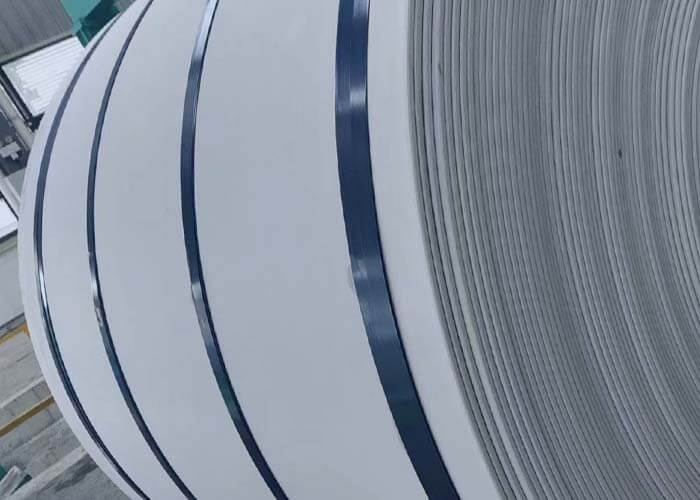
No. 1 surface finish refers to the surface obtained by heat treatment and pickling after hot rolling of the stainless steel.
It is to remove the black oxide scale produced during hot rolling and heat treatment by pickling or similar treatment methods.
This is No. 1 surface processing. The No.1 surface is silvery white and matt.
No.1 hot rolled stainless steel coils are mainly used in heat-resistant and corrosion-resistant industries that do not require surface gloss, such as alcohol industry, chemical industry and large containers.
No.2D Finish
Compared with the common 2B surface finish, the smoothness of the 2D surface is lower than the 2B surface.
But the overall surface of 2D is still very uniform and matt.
The 2D surface finish is generally heat treated and pickled after cold rolling, and then smoothed with a matt roller.
Whether it is in the China national standard, or the Japanese standard, the American standard, and the European standard, there are detailed specifications for the 2D surface finish.
No.2B Finish
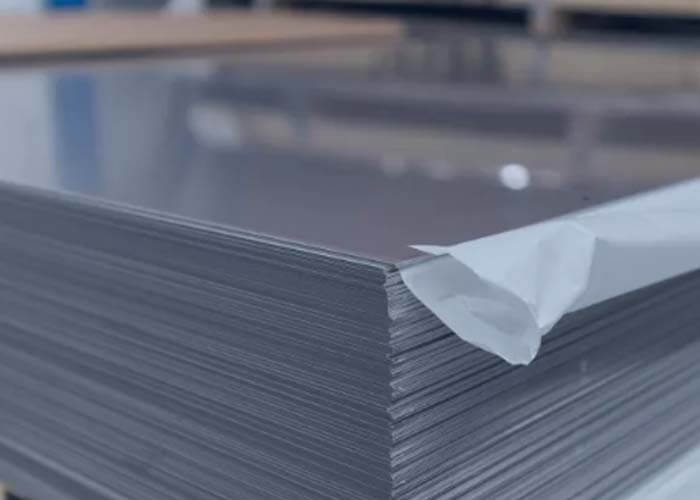
The surface finish of 2B is different from the 2D surface in that it is smoothed with a smooth roller, so it is brighter than the 2D surface.
The surface roughness Ra value measured by the instrument is 0.1~0.5μm, which is the most common processing type.
This kind of stainless steel surface finish is the most versatile, suitable for general purposes, which is widely used in the chemical, paper, petroleum, medical and other industries, and can also be used as a building curtain wall.
Bright Annealed Finish
BA is the surface obtained by bright heat treatment after cold rolling.
Bright heat treatment is annealing under a protective atmosphere that guarantees that the surface is not oxidized to preserve the gloss of the cold-rolled surface, and then use a high-precision smoothing roll for light leveling to improve the surface brightness.
This surface is close to a mirror finish, and the surface roughness Ra value measured by the instrument is 0.05-0.1μm.
BA finish is not pickled in acid because a thin oxide film is formed during annealing, eliminating the need for pickling. It is widely used in trim appliances, surgical instruments, and cookware.
Polished Finish
Mechanical polishing type is a polishing method that relies on cutting and plastic deformation of the material surface to remove the polished convexities to obtain a smooth surface of polished stainless steel strip.
Generally, oil stone sticks, wool wheels and sandpaper are chose with manual operations.
No.3 Finish
The No. 3 surface finish is identified by ASTM and corresponds to the 1G-2G designation in EN standards.
When aiming to achieve a No. 3 surface finish, the initial stage holds significant importance.
Within the No. 3 surface finish, surface roughness can extend up to 1 micrometer. Naturally, the surface will exhibit minimal reflectivity.
This finish finds frequent use in applications like kitchen equipment and components used in food processing facilities, among others.
No.4 Finish
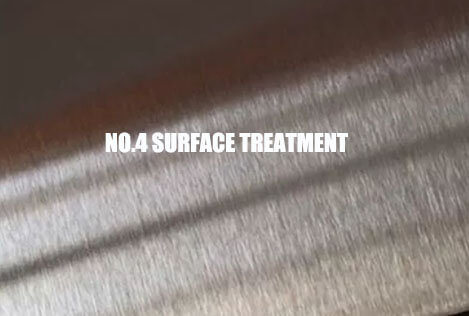
The surface finish of No. 4 is a fine polished surface finish that is brighter than the surface of No. 3.
It is also obtained by polishing the stainless steel cold-rolled stainless steel plate with 2 D or 2 B surface as the base and polishing with abrasive belt with a grain size of 150-180# Machined surface.
The surface roughness Ra value measured by the instrument is 0.2~1.5μm.
NO.4 finish grade 430 stainless steel surface is widely used in restaurant and kitchen equipment, medical equipment, architectural decoration, containers, etc.
HL Finish
HL surface finish is commonly called hairline finish. Japanese JIS standard stipulates that 150-240# abrasive belt is used to polish the continuous hairline-like abrasive surface obtained.
In China’s GB3280 standard, the regulations are rather vague.
HL surface finish stainless steel is mostly used for building decoration such as elevators, escalators, and facades.
No.8 Finish
No.8 is a mirror-finished surface with the highest reflectivity without abrasive grains.
The stainless steel deep processing industry also calls as 8K stainless steel plates.
Generally, BA stainless steel materials are used as raw materials for mirror finishing only through grinding and polishing.
After mirror finishing, the surface is artistic, so it is mostly used in building entrance decoration and interior decoration.
TR (Temper Rolled) Finish
TR finish stainless steel is also called hard steel.
Its representative steel grades are 301 stainless steel, they are used for products that require high strength and hardness, such as railway vehicles, conveyor belts, springs and gaskets.
The principle is to use the work hardening characteristics of austenitic stainless steel to increase the strength and hardness of the steel plate by cold working methods such as rolling.
The hard material uses a few percent to several tens of percent of the mild rolling to replace the mild flatness of the 2B base surface, and no annealing is carried out after rolling.
Therefore, the TR hard surface of the hard material is the rolled after cold rolling surface.
What is the Surface Roughness of Stainless Steel?
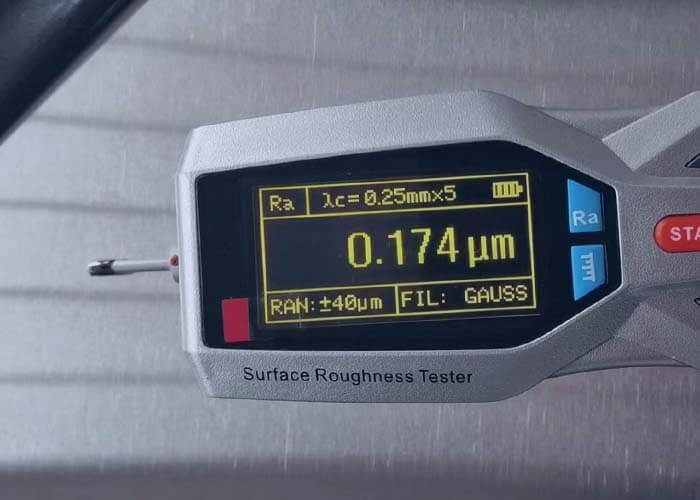
The roughness of stainless steel refers to the geometric characteristics of the stainless steel surface, which represents surface quality parameters.
The magnitude of stainless steel surface roughness can be measured using a surface roughness tester and is expressed using the Ra value. The Ra value is an assessment parameter for micro-surface roughness, and its unit is micrometers (μm).
The size of stainless steel surface roughness will affect its corrosion resistance, mechanical performance, lubrication capability, sealing performance, and visual quality.
Generally, a smaller surface roughness corresponds to better corrosion resistance, stronger mechanical performance, and improved lubrication capability in stainless steel materials.
However, for components that require close coordination, excessively small surface roughness can lead to a reduction in the sealing performance of stainless steel materials.
Therefore, the requirements for stainless steel surface roughness vary in different application scenarios.
Frequently Asked Questions of Stainless Steel Surface Finishes
How to Polish Stainless Steel to Mirror Finish?
Eliminate any uneven portions, which might involve welded material or roughly cut segments. Typically, an 80 grit disc can effectively accomplish this task.
Eradicate minor scratches. Usually, nylon discs are suitable for this process. However, it’s recommended to use a slowly rotating disc. At this point, you can attain a matte satin finish on the stainless steel.
Enhance the stainless steel surface: by utilizing the grinder disc at a low speed, you can refine the satin finish. A combination of nylon fiber and fine-grade silicone carbide abrasive will usually manage this task effectively. This will result in a more lustrous surface finish.
Achieve a mirror finish by polishing the stainless steel: Employ a polishing compound and gently move a fine felt disc over the stainless steel surface using the grinder.
Which Stainless Steel Surface Finishes are Popular?
2B Surface Finish:
The 2B finish stands as the most prevalent choice for cold-rolled mill industrial finishes. This versatile cold-rolled stainless steel finish finds widespread application across various fields.
Potential uses for the 2B stainless steel finish encompass bakeware, chemical plant equipment, dye house equipment, flatware, laundry and dry cleaning machinery, as well as plumbing fixtures, refrigeration units, sewage treatment components, sheet metal products, and vacuum drum dryers.
No. 4 Surface Finish:
Regarded as the primary stainless steel finish within the light fabrication industry, the No. 4 finish is employed for work surfaces, handrails, and scenarios demanding pleasing aesthetics. Boasting a subdued gloss, it’s easy to maintain and features concise parallel polishing lines. This finish undergoes mechanical polishing with abrasives, resulting in a superior overall stainless steel appearance. It’s also known as ‘satin’ or ‘linished’. Universally applicable, it finds use in restaurant and kitchen equipment, storefronts, food processing and dairy machinery, architectural wall panels, beverage equipment, boat fittings, highway tank trailers, hospital surfaces and equipment, as well as instrument and control panels.
No. 8 Surface Finish:
Achieved through a mechanical polish, the No. 8 finish yields a brilliantly non-directional surface, attained through finer abrasives and buffers for a highly reflective outcome. While the grit lines of this stainless steel finish are notably less conspicuous, they may be discernible upon close scrutiny. The final result resembles a mirror-like shine, hence it’s often referred to as the “mirror” finish.
Which Methods do You Use for Stainless Steel Surface Finishes?
- Abrasives such as aluminum oxide, zirconium, or ceramic powders
- Tools may include buffers, pipe sanders, belt sanders, flap wheels, brushes, and finishers
- Chemicals for specialized finishing
What are the Various Stainless Steel Finishing Applications?
Surface Finish | Definition | Application |
2B | Those finished, after cold rolling, by heat treatment, pickling or other equivalent treatment and lastly by cold rolling to given appropriate luster. | Medical equipment, Food industry, Construction material, Kitchen utensils. |
BA | Those processed with bright heat treatment after cold rolling. | Kitchen utensils, Electric equipment, Building construction. |
NO.3 | Those finished by polishing with No.100 to No.120 abrasives specified in JIS R6001. | Kitchen utensils, Building construction. |
NO.4 | Those finished by polishing with No.150 to No.180 abrasives specified in JIS R6001. | Kitchen utensils, Building construction, Medical equipment. |
HL | Those finished polishing so as to give continuous polishing streaks by using abrasive of suitable grain size. | Building Construction. |
NO.1 | The surface finished by heat treatment and pickling or processes corresponding there to after hot rolling. | Chemical tank, pipe. |
Conclusion
Numerous options exist for selecting stainless steel surface finishes suitable for your project.
As a fundamental guideline, prior to selecting a specific surface finish for stainless steel, ensure a clear understanding of your objectives. Whether the aim is to achieve an appealing aesthetic or to enhance performance attributes.
For optimal solutions regarding stainless steel surface finishes, reach out to our experienced professionals today.

